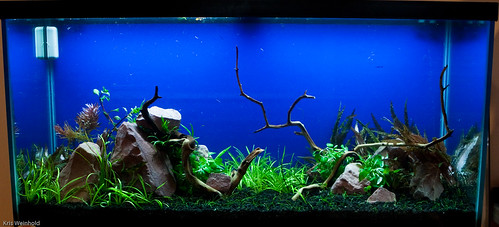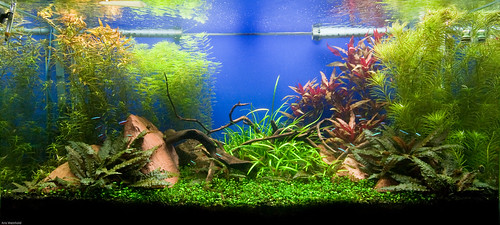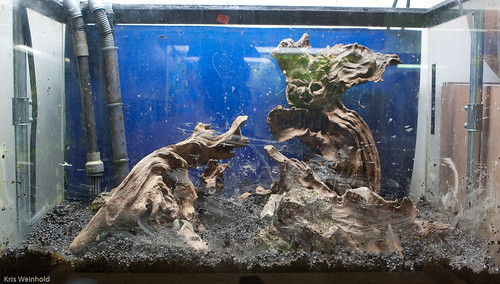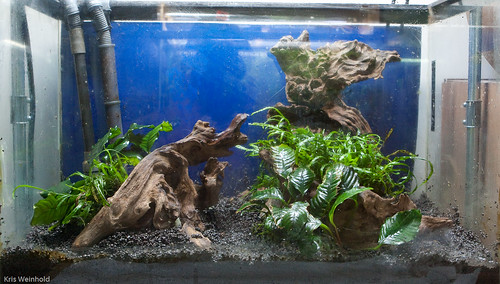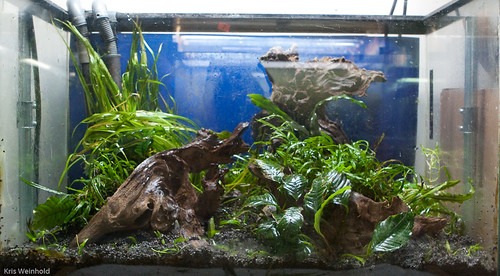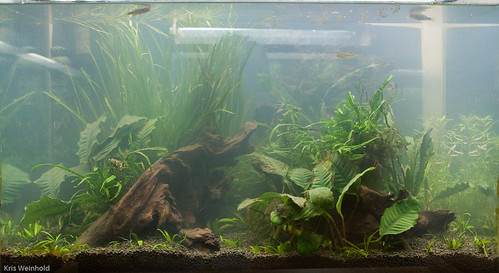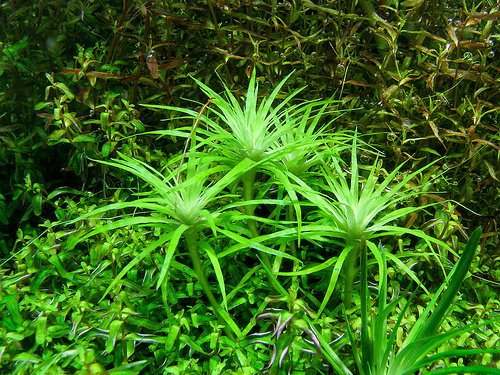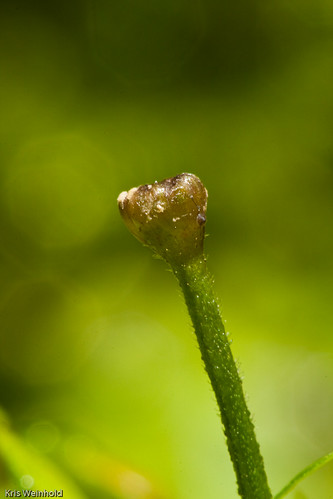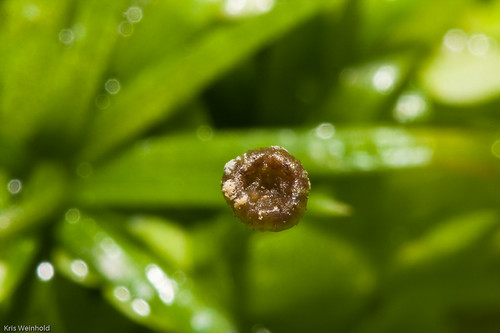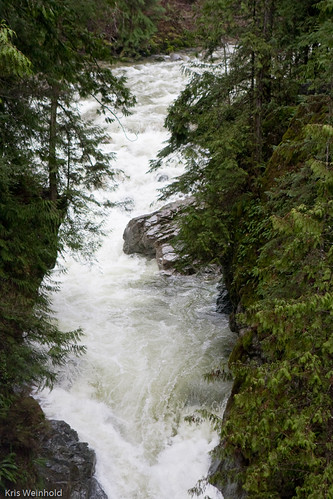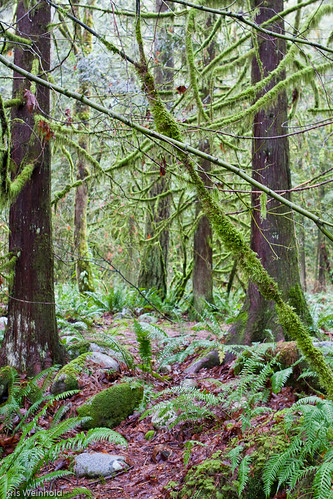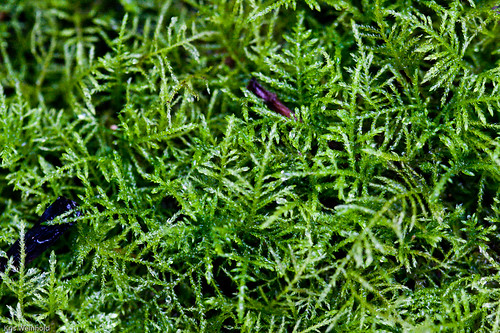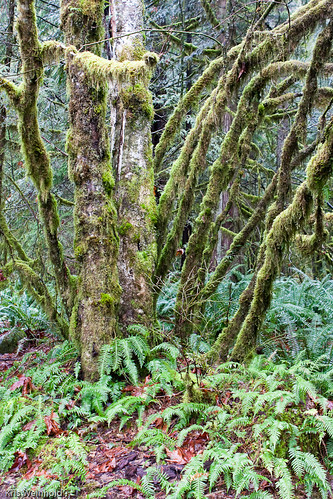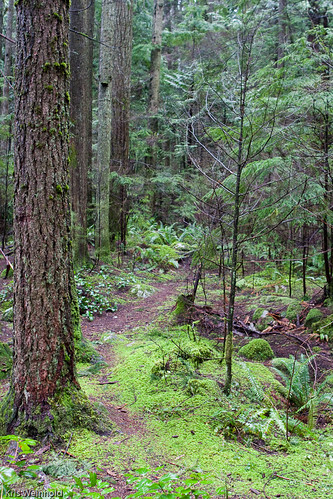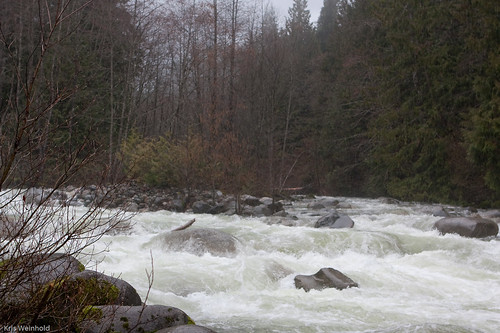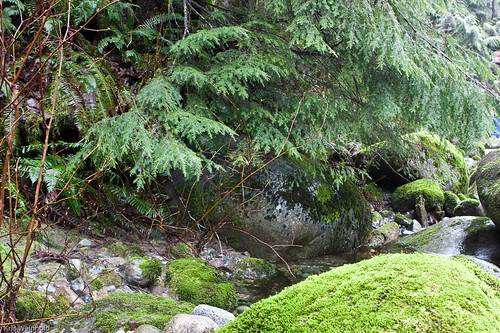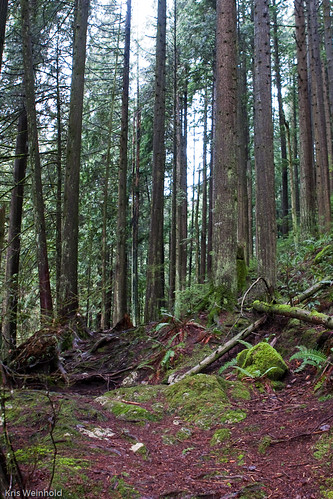Paul’s 90G Updated Aquascape
March 23rd, 2010Last fall, a couple GWAPA members got together at Paul’s house to help him aquascape his 90G aquarium. To remind you, just after planting, the new aquascape looked like this below. Obviously, the initial planting did not feature many stems in the background.
Now, several month later, the tank has really grown in. Paul made a few minor adjustments to the original placement of the wood in the aquarium, which I think now looks better than one day one. The foreground is growing in very nicely, and the Sagittaria subulata in the middle background is adding a very nice jungle look. The Cryptocoryne looks especially healthy in this aquarium.
I think the hardscape, foreground, and mid-ground look pretty good. The background looks good, but I probably took the picture about a week past its prime. I think that when Paul trims the stem plants, and they grow back up to about 3-4 inches above the tallest rock, it’ll be perfect. What does everyone else think of this aquascape? I will pass any comments onto Paul…
